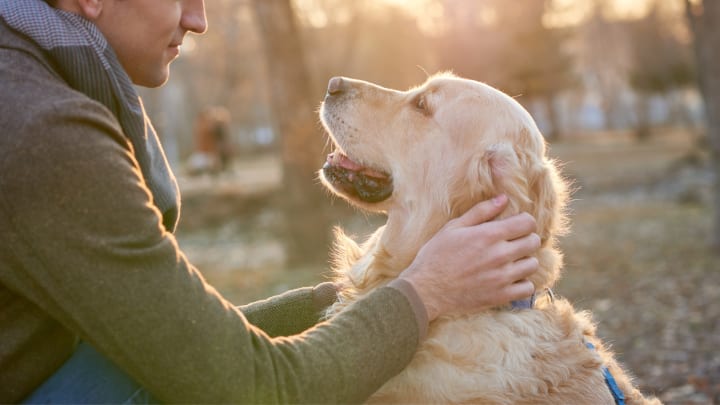How To Get Your Dog's Attention!
Training a new dog can be a rewarding experience

Training a new dog can be a rewarding experience that strengthens the bond between you and your furry friend. The key to successful dog training is consistency, patience, and positive reinforcement. In this blog, we will go over the basics of dog training and provide you with some Tips and Tricks to help you get started.
Step 1: Choose Commands
Before you start training, it's important to decide what commands you want to teach your dog. Common commands include "sit," "stay," "come," "heel," and "leave it." Make sure to choose commands that are relevant to your dog's everyday life and that you'll use regularly.
Step 2: Get Your Dog's Attention
Before you can start training your dog, you need to get its attention. This is usually done by calling your dog's name and then giving the command you want it to learn. Once you have your dog's attention, you can start training.
Step 3: Use Positive Reinforcement
Positive reinforcement is one of the most effective ways to train a dog. This means rewarding your dog every time it performs the desired behavior. Treats, praise, and affection are all great ways to positively reinforce your dog.
Step 4: Practice, Practice, Practice
Consistency is key when it comes to dog training. It's important to practice the same commands every day, several times a day so that your dog gets used to them. Gradually increase the difficulty of the commands as your dog becomes more familiar with them.
Step 5: Stay Calm and Patient
Training a new dog can be frustrating, especially if they don't respond the way you want them to. It's important to stay calm and patient. Don't yell or get angry with your dog if it doesn't understand a command. Instead, take a step back and try again later.
Step 6: Consistency is Key
It's important to be consistent when it comes to training your dog. This means using the same commands, gestures, and rewards every time. Consistency will help your dog learn faster and make the training process smoother for both you and your furry friend.
In conclusion, training a new dog takes patience, consistency, and positive reinforcement. Start with basic commands and gradually increase the difficulty as your dog becomes more comfortable with them. Remember to stay calm, patient, and consistent, and you'll be well on your way to having a well-trained dog in no time.

>>>Develops your Dog's "Hidden Intelligence"<<<
Dogs' behavior and how to handle it?
Dogs have their own unique personalities and behavior patterns, just like humans do. Understanding your dog's behavior and learning how to handle it is an important part of being a responsible dog owner. Here are some common behaviors that dog exhibit and tips on how to handle them.
Barking: Dogs bark for a variety of reasons, including boredom, attention-seeking, and warning. If your dog barks excessively, it's important to identify the cause and address it. For example, if your dog is barking because it's bored, try giving it more exercise or interactive toys. If your dog is barking for attention, ignore the behavior and only reward it when it's quiet.
Chewing: Chewing is a natural behavior for dogs, but it can become destructive if not controlled. Providing your dog with plenty of toys and chew bones can help satisfy its chewing needs. If your dog starts to chew on furniture or other household items, redirect its attention to a more appropriate object and praise it when it chews on the approved item.

3. Digging: Digging is a natural behavior for dogs, especially for those with a strong prey drive. Providing your dog with a designated digging area can help control this behavior. If your dog starts to dig in inappropriate areas, interrupt the behavior and redirect its attention to a more appropriate activity.
4. Jumping: Dogs jump for a variety of reasons, including excitement, attention-seeking, and playfulness. To prevent jumping, it's important to teach your dog a "sit" command and only reward it with attention when it is sitting calmly.
5. Separation anxiety: Some dogs experience separation anxiety when their owners leave the house. This can lead to destructive behavior, such as chewing, digging, and barking. To help prevent separation anxiety, gradually acclimate your dog to being alone and provide it with plenty of mental and physical stimulation.
6. Aggression: Aggression can be a serious problem in dogs and can be caused by a variety of factors, including fear, insecurity, and dominance. If your dog is exhibiting aggressive behavior, it's important to seek the help of a professional dog trainer or behaviorist.

In conclusion, understanding your dog's behavior and learning how to handle it is an important part of being a responsible dog owner. By providing your dog with plenty of mental and physical stimulation, redirecting inappropriate behavior, and seeking help when necessary, you can help ensure that your dog is well-behaved and happy.
Here are a few smart tips that can help make the training process smoother and more effective:
Start early: The earlier you start training your dog, the easier it will be to shape its behavior. Puppies are especially receptive to training, so take advantage of this time to teach them basic commands and good behavior.
Keep sessions short: Dogs have short attention spans, so it's important to keep training sessions short and focused. Aim for 5–10 minute training sessions several times a day, rather than one long session.
Be consistent: Consistency is key when it comes to dog training. Use the same commands, gestures, and rewards every time to help your dog learn more quickly.
Use positive reinforcement: Positive reinforcement is one of the most effective training techniques. Reward your dog every time it performs the desired behavior, whether with treats, praise, or affection.
Avoid punishment: Punishing your dog for not understanding a command can be ineffective and can damage the bond between you and your furry friend. Instead, focus on positive reinforcement and redirect your dog's attention to the desired behavior.
Be patient: Training a dog takes time and patience. Don't expect immediate results, and be willing to repeat commands and exercises until your dog understands.
Set achievable goals: Start with simple commands and work your way up to more complex behaviors. Setting achievable goals will help keep you and your dog motivated and make the training process more enjoyable.
Make training a part of daily life: Incorporating training into your daily routine will help reinforce good behavior and make training a natural part of your dog's life.
Credit-CanvaIn conclusion, training your dog requires patience, consistency, and positive reinforcement. By following these tips, you can help your dog develop good behavior and build a strong bond with your furry friend.
>>>Develops your Dog's "Hidden Intelligence"<<<
Disclaimer - The article contains some external links.
Image Source - https://www.canva.com





Comments (1)
Loved that last photo of the puppy giving the 'high-five'. I haven't had a dog for many years but if I did still have one this article would be invaluable. Since we're only partially pack animals, it can be hard for us to understand our 'all-in' pack animal dogs. An article like this which is clear, concise and very well written could literally save dogs' lives. I'd like to read more of your writing Anjan!